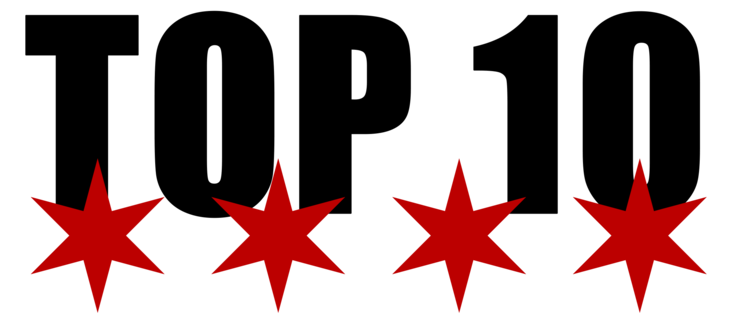The Chicago Bears are in the middle of another rebuild under new GM Ryan Poles. He has made it his mission to build this team through the draft. It’s time to stop relying on free agency and aggressive trades. Those may have helped find short-term success, but it is never sustainable. While this philosophy has been proven over many decades, the downside is it can take time before a team becomes good. Patience isn’t something the modern NFL fan has. Thus one must ask the question.
How many good drafts will Poles need to make this team a true contender?
We must first clarify what constitutes a “good” draft to answer that. In this instance, after studying the Bears’ history, the best description is a draft that delivers at least two long-term starters. We’re talking about players that ended up starting at least five years in the NFL. With these parameters, the timeline works out to around five such drafts being required before a team is ready to go after a Lombardi trophy.
1985 Bears
- 1975 draft (Walter Payton and Mike Hartenstine)
- 1979 draft (Dan Hampton and Al Harris)
- 1980 draft (Otis Wilson and Matt Suhey)
- 1981 draft (Keith Van Horne and Mike Singletary)
- 1983 draft (Jimbo Covert, Willie Gault, Mike Richardson, Dave Duerson, Tom Thayer, Richard Dent, and Mark Bortz)
2006 Bears
- 1998 draft (Olin Kreutz and Patrick Mannelly)
- 2000 draft (Brian Urlacher and Mike Brown)
- 2003 draft (Charles Tillman and Lance Briggs)
- 2004 draft (Tommie Harris and Bernard Berrian)
- 2006 draft (Danieal Manning and Devin Hester)
Ryan Poles can accelerate things with more hits.
If a GM finds more than two long-term starters in the same draft, that is a major bonus and moves the rebuild forward faster. We don’t yet know how Poles has done since it’s still so early. His first draft class has some promise. Kyler Gordon, Jaquan Brisker, and Braxton Jones all flashed potential as rookies. If they pan out as hoped, that is a great start for the Bears. It certainly doesn’t hurt that Cole Kmet, Jaylon Johnson, Darnell Mooney, Justin Fields, and Teven Jenkins all look like quality additions.
Subscribe to the BFR Youtube channel and ride shotgun with Dave and Ficky as they break down Bears football like nobody else.
Much of how this unfolds will hinge on the next two drafts. Ryan Poles’ 2023 class features a top 10 pick (Darnell Wright) and two 2nd round picks (Gervon Dexter and Tyrique Stevenson). At least one of them should be a hit. Then the Bears go into 2024 with two picks in the 1st round. That is a golden opportunity to add more high-end talent to the roster. If things go as planned, this team could be ready to make a run as early as 2025. Maybe sooner if Fields takes another big step forward.













Dr. Melhus – I’d remind you of three things. First, everyone was breathing heavy for DaRon Payne to be signed in free agency and that would have been a big contract of $20MM/yr or more. Nobody was agonizing over that contract. Second, both McGlinchey and McGary are only 28 years old…still in their prime for offensive linemen…particularly when you consider they then decided to keep Whitehair who is 31, coming off an injury and being paid over $14MM, who if I read overthecap.com correctly, is the highest paid center in the league this year. They could have freed up $9.9MM… Read more »
I think Scott BRS hit the nail on the head. You have different championship windows. Often times now teams try to take a run while their QB is on a rookie contract and they can put a strong roster around them (eagles). The next window occurs when you have a great qb with a more average roster(chiefs), or you miss on the QB and hit on a bunch of other picks. The later is the most common way the bears have built contenders the last 30 years. As we have seen it’s harder to keep a team of players minus… Read more »
Scott brs: over the long haul, building an NFL roster is a flow process. Every years players leave (injury, retirement, trades, FA), and new ones come in. The key is to work to get better every year as part of that flow. Players that aren’t as good, or don’t fit the system well, are allowed to leave or cut, and ones that perform are rewarded with good contracts. On top of that, there’s the salary cap, limiting what can be done overall. A GM can’t simply buy a player in the top 5 at every position, as they would be… Read more »
Chicago Dave: It would have been nice to sign McGlinchey or McGary and have Javon Hargrave (sic), but those would have been 2 large contracts for aging players. Poles wants to build a young team, primarily off the draft, using free agents and trades to fill in a few holes. Poles clearly felt that Edmunds was a key piece for the defense, but aside from that, we need to save cap funds to pay players we drafted and are playing well, like Braxton Jones and Brisker. Edwards was a fairly cheap signing, especially for the level of production he had… Read more »
A rookie contract is four years. First round picks can get the fifth year option. Three years after the first draft you have to start resigning the gems you hit on or they will leave for more money and they will no longer be on the team. The math doesn’t work out if you have to have five good drafts. Maybe they’re going to get rid of the salary cap.